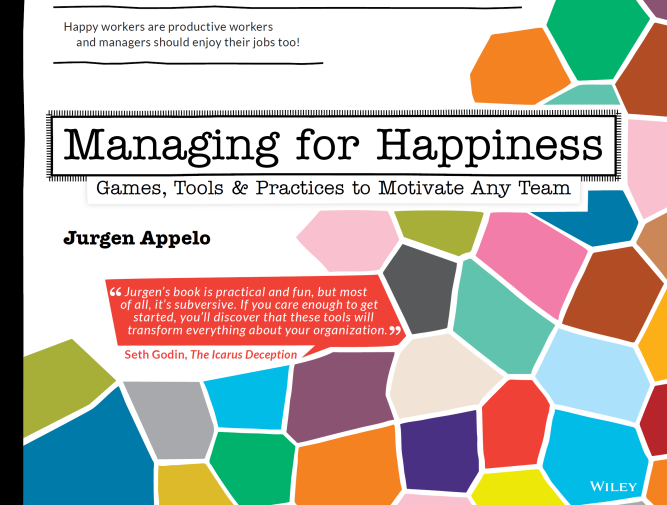The big checklist that I used while writing my new book #Workout contained the following…

How to Define Your Target Audience… with Questions
“Can our organization be a little bit more like Pixar, Spotify, Netflix, Zappos, Virgin, Valve or IDEO? Is there something I can do to get a better company culture? Better collaboration? Better management?”
There is a reason why I started the book description of my #Workout book on Amazon with this question. For me, it relates to the target audience of the book.
Attributes
Last week, I was at Karsmakers, one of my favorite coffee bars in Brussels. Considering that the bar is right across the European Parliament, it’s no surprise that the regular customers are Members of Parliament, civil servants, lobbyists, European Council members, and all those others who at least try to make the Europe Union a better place. (I’m in a generous mood today.) Oh, and there’s often one writer among the guests. That’s me.
Last week, however, I was pleasantly surprised to see three women in traditional black Muslim clothing, with headscarves and everything, who were clearly not the average Member of Parliament. But they seemed to enjoy their coffee even more than others, whipping out their smartphones, and uploading selfies to Facebook, or whatever they used to connect with their loved ones. This made me wonder: what is the target audience of this coffee bar?
When I started writing my recent book, I wondered how to define the target audience of a book. Usually, people define target audiences in the form of job positions, industries, genders, age groups, etc. These are all personal attributes that are (for most people) easy to determine. But using such attributes doesn’t sit well with me. I know my readers a little bit, and I know they are all quite different. Some are project managers, some are HR managers; some are CEOs of startups, others are team members in international enterprises; some are coaches and consultants, others are developers and designers. It is impossible to describe the “typical” reader of my books! Nor do I wish to define an “ideal reader” because that would make it seem that everyone who doesn’t fit the model is secondary, or somehow less important. I don’t consider a 20-year old female Muslim software developer in Iran any less important than a 40-year old male Agile business consultant in Germany. (Even though the latter may purchase more of my books.) There’s no way to capture the diversity among my readers in just a few words.
Unless…
Questions
Unless we stop using attributes and start using questions. We could ask ourselves, “Which question should draw people to our product or service?” The target audience for the coffee bar in Brussels is not Members of Parliament. Instead, the target audience is people with the question, “Where can I get some good coffee around here?” (Their website actually says: Looking for the perfect spot to enjoy a hot drink on a rainy day? Fancy a good cup of coffee in a relaxed atmosphere?”)
Yes, these questions may be asked by Members of Parliament. But also by male writers, Muslim women, and many other very different people. The vicinity to the EU Parliament is probably not a coincidence. Plenty of customers there. But I walk 25 minutes just to enjoy their coffee, and they know exactly how I want it. They sometimes finish making it, even before I can say, “one medium regular latte, please”.
For my #Workout book, I tried the same approach: I cannot define the typical attributes of my readers. Who cares whether they are coaches or consultants? Employees or managers? Old or young? Atheists or Christians? I know what they’re looking for!
My readers want to change things in the organization where they work. They feel inspired by other companies, but they’re not ready to give up on their own organization (yet). They know it’s up to them to change things, and most of what they want to change is somehow related to management. That’s why they might ask themselves the question, “How can our organization be a little bit more like Pixar, Spotify, Netflix, Zappos, Virgin, Valve or IDEO? Is there something I can do to get a better company culture? Better collaboration? Better management?”
This is how I prefer to define a target audience. Not by position, industry, gender, age, race or religion. Instead, I define a target audience by the questions people ask themselves.
photo credit: (c) 2007 Sanne Aabjerg Kristiansen, Creative Commons 2.0
Other articles in this series:
- 13 Business Models for Book Authors
- How to Pick a Book Title (in 7 Steps)
- How to Define Your Target Audience... with Questions
- How to Write a Book: Structured or Emergent
- How to Design a Book Cover... 5 Rules
- How to Design a Book… Make It an Experience
- How to Create a Book’s Front and Back Matter
- How to Write a Book… with Feedback and Options
My new book Managing for Happiness is available from June 2016.





